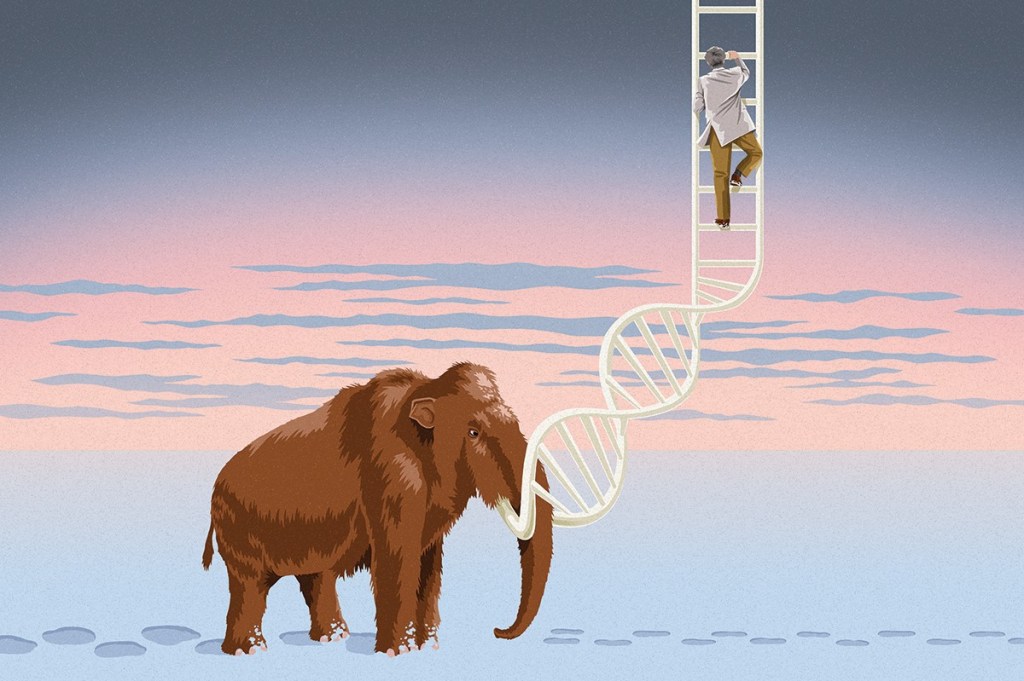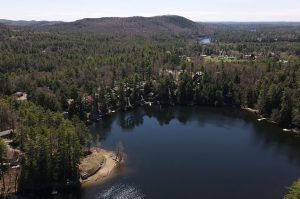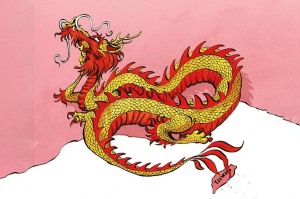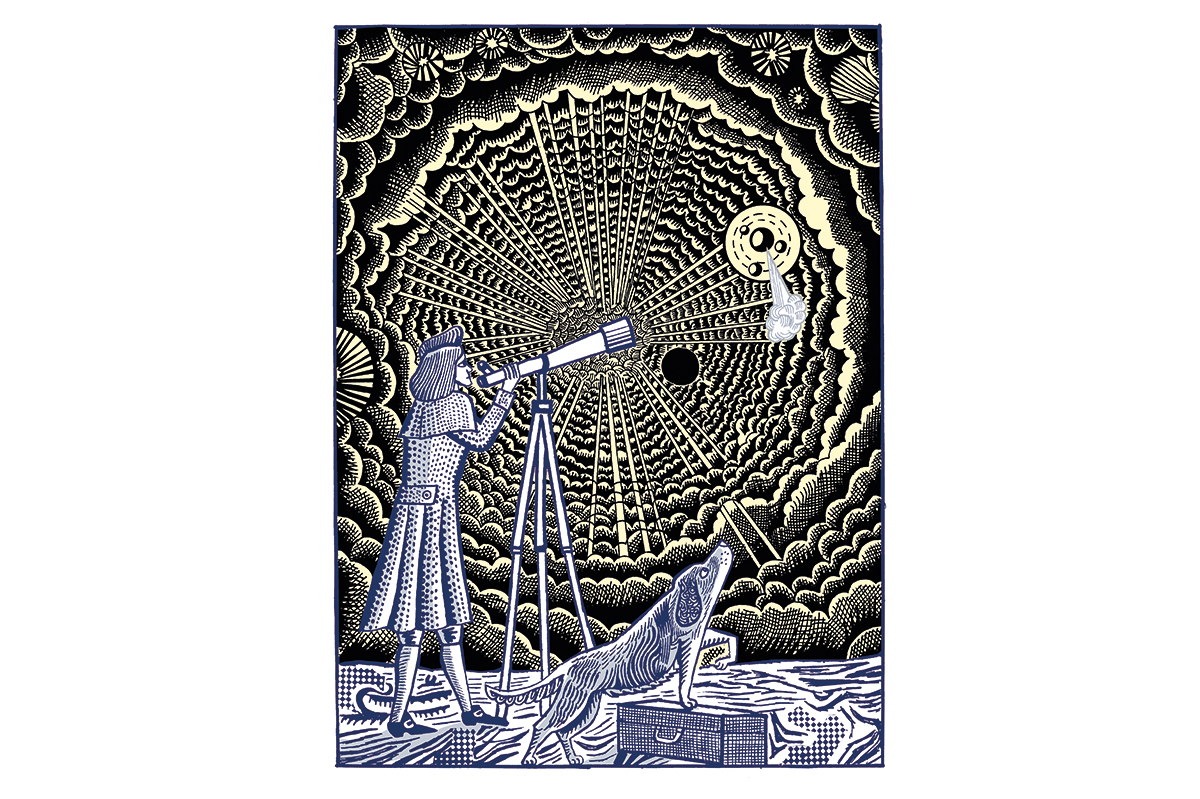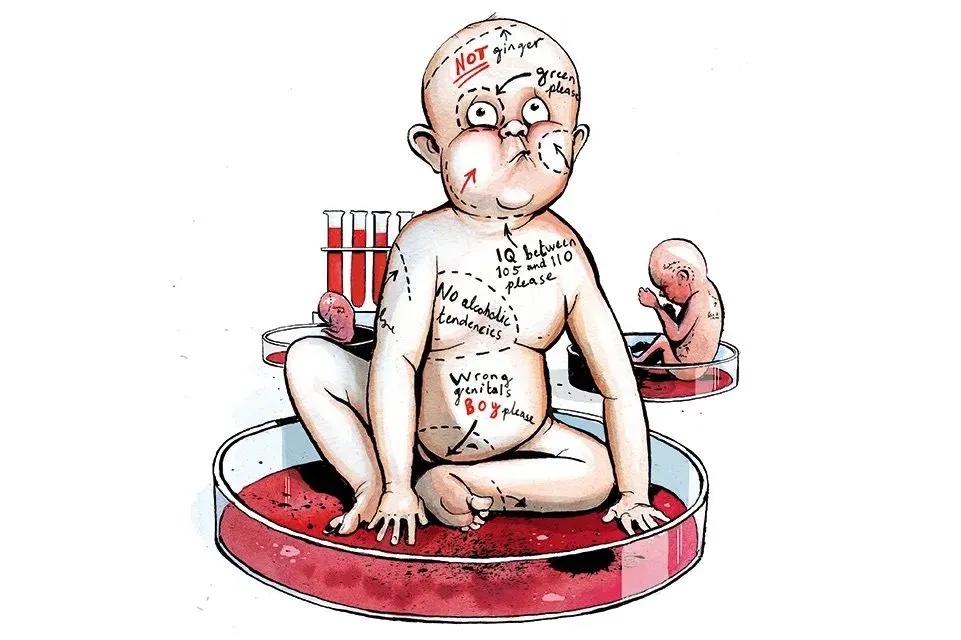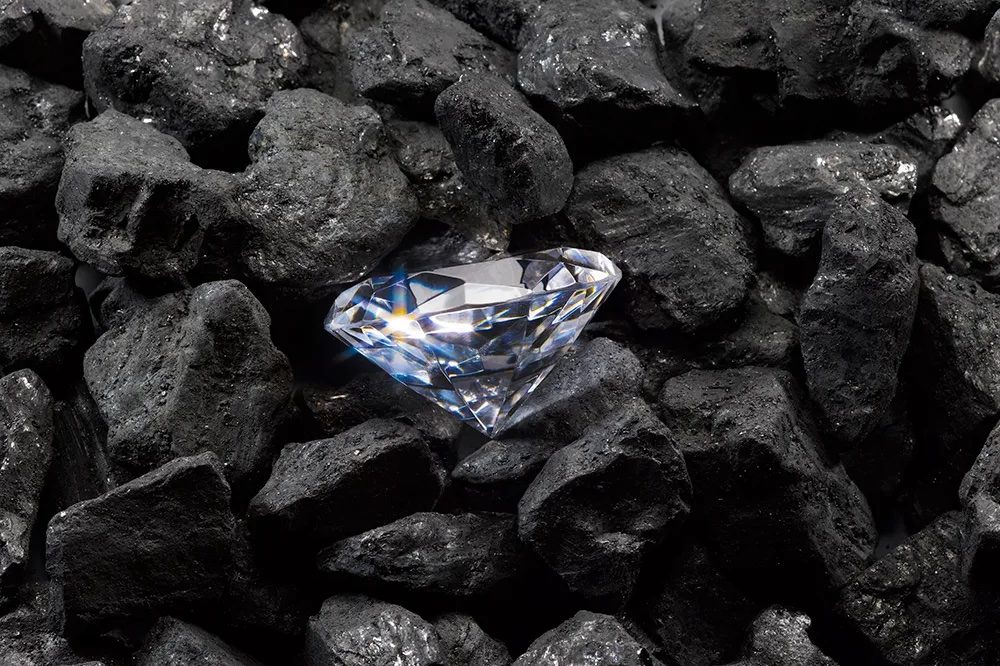A few minutes into celebrated Harvard geneticist Dr. George Church’s appearance on The Colbert Report, Stephen Colbert motioned towards him conspiratorially.
“How do you think your work will eventually destroy all mankind?” asked the comedian, peering meaningfully over his glasses and tapping the table. “It’s a couple of options. Do you think it’s going to be like a killer virus? Or more like a giant, mutant, killer-squid-man, who arises from the Pacific, between Easter Island and Chile, and feasts on our flesh?”
Colbert’s probing was tongue-in-cheek, of course. But the joke worked because it touched on real concerns. Dr. Church, sixty-eight, has had a long and storied career, including helping to launch the Human Genome Project in 1984. He is best known by the public, however, for his efforts to bring back the woolly mammoth — a goal he thinks he might be able to achieve by 2028.
If it works, this will be the first time that the vast, tusked, hairy elephant has roamed the earth since it went extinct some 4,000 years ago. Or at least a proxy — as Dr. Church is at pains to explain, the reborn creature won’t be an exact replica, but an approximation, with woolly mammoth genes inserted into genetically modified Asian elephants.
“People tend to use the shorthand that we’re de-extincting mammoths: bringing them back to life,” he says, chatting over Zoom from his Harvard lab. “We’re not. At least, not in the near future. We’re trying to de-extinct genes.”
In 2021, Dr. Church co-founded Colossal Laboratories & Biosciences with Texas-based serial entrepreneur Ben Lamm. Their goals include not only “de-extincting” the woolly mammoth but also the dodo (which died out in 1662) and the Tasmanian tiger (the last known tiger passed away in captivity in Hobart in 1936), as well as working on wider nature conservation.
The biotech company kicked off with $15 million in seed funding and just nineteen employees. Today, it has 107 employees and labs in Dallas, Boston and Melbourne, Australia. A slew of investors, including celebrities Chris Hemsworth, Paris Hilton and Thomas Tull, chairman of the US Innovative Technology Fund and producer of Jurassic World, raised a further $210 million. Colossal is now valued at $1.5 billion.
Yet despite its initial success — and its status as the world’s first de-extinction unicorn — Colossal has its detractors. To some, its ambitions are overpromised. To others, its quest unearths serious ethical questions. Namely, is it safe to reintroduce to the world new hybrids created from long dormant genes?
The seed for Colossal first formed in 2019. At the end of an introductory phone call, Lamm asked Dr. Church what else he was working on.
“He said: ‘I am working to bring back the woolly mammoth, preserve the ecosystem and build technologies for conservation.’ I was like, that’s the greatest thing I have ever heard,” recalls Lamm, speaking from his home in Dallas where he lives with his wife Sarah and two terrier mutts, Barbie and Ken.
That evening, Lamm didn’t sleep. In the morning, he had reached a conclusion: “I felt like if I don’t go and pursue this, I’m this hypocrite. The universe presented this opportunity to really do something to change mankind and help the world. Within a day we were back on the phone and within a week I was at his lab.”
For Dr. Church, Lamm’s intervention was the equivalent of the arrival of a fairy godmother (albeit one with a dark beard and waves of thick shoulder-length hair, prone to enthusiastic outpourings and a passionate love of learning). Dr. Church had been working on the mammoth project since 2009, but, as he acknowledges, “at a very low level — just spare change, spare time and volunteers from the biotech community.”
Simply stated, he just didn’t believe that the research was fundable on a wider scale. Lamm, forty-one, who has founded and sold five companies and currently owns the AI company Hypergiant (he left as CEO to run Colossal) thought the opposite. He “has good taste, a good knack for seeing what society really wants and needs,” notes Dr. Church.
In other words, Lamm understood the power of branding. “I love the mammoth because it’s so iconic,” he enthuses. “I also love the [Tasmanian] tiger. There’s a weird mythical mystic kind of vibe to the thylacine. Unlike the dodo and mammoth, it’s barely out of human memory… It’s almost like the Yeti or Bigfoot but it actually existed.”
Drawing attention to these creatures of lore will reap wider rewards. Colossal’s investors are attracted not only to the draw of seeing a mammoth proxy walk the earth once again, but to the potentially lucrative technology spin-offs and new discoveries made along the way (Colossal and Harvard have the exclusive licence to commercialize technologies developed by the project). Says Lamm: “If we can use the allure and excitement of de-extinction to build new tools and technologies, then that’s a win.”
Church’s own love affair with the woolly mammoth began in 1964 when he visited New York’s World Fair. For the ten-year-old Florida boy, “it made a big impression.”
Growing up, Dr. Church had “zero exposure to science. I didn’t know anybody who was a scientist. In fact, they didn’t even teach any science until seventh grade.” Despite this, he ended up completing two bachelor’s degrees in zoology and chemistry at Duke University in just two years. In 1974 he was expelled from Duke’s doctoral program for skipping classes (he was working on another groundbreaking project, helping to solve the structure of transfer RNA).
Harvard took him in. It was there that he met his wife, molecular biologist Ting Wu, with whom he has one daughter, Marie, now in her early thirties. Since then, Dr. Church has cofounded forty-seven companies, been listed as among the most “influential people in biopharma” by Fierce Pharma (which also dubbed him “the most interesting man in the world”) and been included in TIME’s list of 100 most influential people in 2017.
“That was fun,” he laughs. “They actually asked me to give one of the toasts — I think I dedicated it to the human guinea pigs.”
Dr. Church cuts not just an impressive mental but physical figure. At 6’5”, sporting a long white beard, he has the face of a wily Santa, imposing yet warm, and made for magazine covers. To talk to, he is patient and curious. He can move with ease and grace between the complexities of genome editing and his love of veganism (he has been a vegan on and off since 1973 after enrolling in a MIT experiment).
Biology is Dr. Church’s life. He eats just one meal a day to ward off his narcolepsy and spends most of his waking hours in his Harvard or home lab. Yet calling it work “is an overstatement,” he chuckles. “I do put in probably 100 hours a week, but it’s exactly what I would do if I was completely unemployed.”
Creating a mammoth-elephant hybrid is no easy task. Colossal is currently scouring the DNA in mammoth bones to find the genetic code for traits that allowed the animal to live in subzero conditions, including its layer of subcutaneous fat, small ears, and woolly hair.
Multiplex editing will introduce all the selected changes into the genome. Then the project managers hope to develop an artificial womb to gestate the proxy — a challenge, given that no mammal has yet been successfully raised from fertilization to birth in one, let alone in a womb big enough to hold a calf that will reach 200 pounds over twenty-two months.
“A question we get asked frequently is: why de-extinct something that already had its chance? Why don’t you focus on endangered species and saving them from going extinct?” says Dr. Church. “Well, that’s exactly what we’re doing. All elephant species are endangered. We’re trying to give them new land in the Arctic that’s far away from humans, who are the major culprits causing extinction. We’re trying to cure Asian elephant-specific herpesvirus (EEHV), which can be deadly, especially in young elephants.”
Indeed, they are working on making their mammoth proxy resistant to EEHV and plan to give them short tusks to protect them against poachers. The “cold-resistant” elephant will then be reintroduced into Arctic environments, where it can live far away from human interference.
Not only that: Colossal hopes that the mammoth proxy will help combat climate change by restoring the tundra to grassland. The mammoths will knock down trees, encouraging grass-inviting photosynthesis; the herbivores will also compress snow on the ground, enabling winter permafrost freeze. This will prevent the vast amount of methane — thirty times more potent a greenhouse gas than carbon dioxide — that bubbles just below the tundra’s surface from escaping.
Dr. Church believes science is the answer to climate change, not belt-tightening and collective tut-tutting. “If you frame it a little more creatively it’s a win-win,” he says. “It makes it a more hopeful discussion.” “Mam- moths are not going to be the silver bullet that changes the world,” concedes Lamm. Still, “in measured locations they [will have] a material impact.”
Is it morally right, though, to play God and genetically modify living animals? Especially given that Colossal is a private, for-profit company, with plans for commercialization? Its potential moneymaking ventures, aside from core technologies, include educational videos, applications and products, such as books and toys.
Dr. Church is unperturbed. “People can use jet planes against buildings if they want, but I wouldn’t have said you shouldn’t develop this because one day someone might run it into a skyscraper.” Plus, as he points out, we are already living in a world of genetic modification, with DNA fiddled to suit human tastes in organisms as varied as corn to salmon.
Then there’s the inevitable Jurassic Park comparison. When I raise this with Lamm, he sounds faintly exasperated. “This is my third conversation about Jurassic Park today,” he sighs. “That was a movie, and it wasn’t real… I think it’s very unethical to not pursue these types of products — because we are bringing awareness to the current extinction rate and loss of diversity.”
Bringing business into the fold, insists Lamm, is not a compromise but a solution. In a March 2023 article for Fast Company, Lamm wrote that the “extinction crisis is a business crisis.” He noted that 30,000 species are going extinct each year and, according to consulting firm BCG, the decline in “ecosystem functionality” costs the global economy over $5 trillion a year.
To help combat what many refer to as the “sixth mass extinction,” Colossal will allow all conservation groups to leverage their technologies for free (applications in human healthcare will be monetized). More knowledge, the thinking goes, is better for the world. Eventually, Colossal hopes to create a “de-extinction” toolkit, available for scientists everywhere to use for species preservation.
As for Dr. Church, he has a characteristically philosophical approach to criticism.
“One of the nice things about getting this much attention, both positive and negative, is that you see a lot of the unintended stuff long before it happens,” he reasons. “Some of my colleagues don’t like it when a journalist or creative fiction writer paints a negative image of scientists but I think it’s like immunization, it protects us against those scenarios… It’s unlikely that we’re going to do the exact same things that went wrong in Jurassic Park, for example.”
Plus, if Colossal achieves nothing else, it will surely inspire a new generation of scientists. Dr. Church receives dozens of emails and handwritten letters a month, often containing drawings of the woolly mammoth, from children saying they want to be like him when they grow up.
Lamm is excited by this prospect: that kids are hoping to become entrepreneurs and scientists who might one day too chase daring, seemingly impossible big ideas. “I hope that there’s a halo effect of other people wanting to do crazy big stuff,” he says, eyes shining. “Maybe we can bring more kids to science versus the Kardashians. That is cool.”
This article was originally published in The Spectator’s August 2023 World edition.



